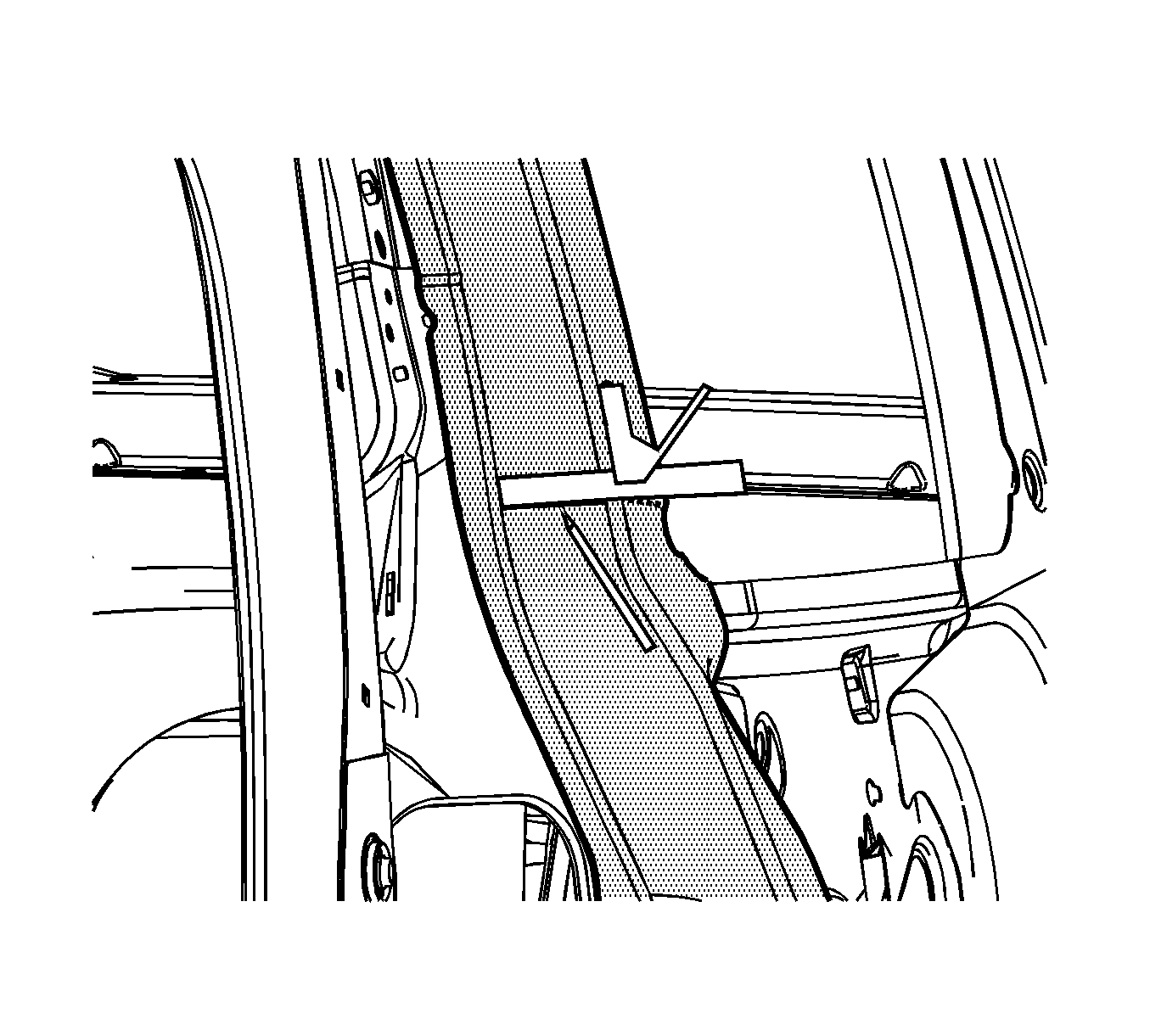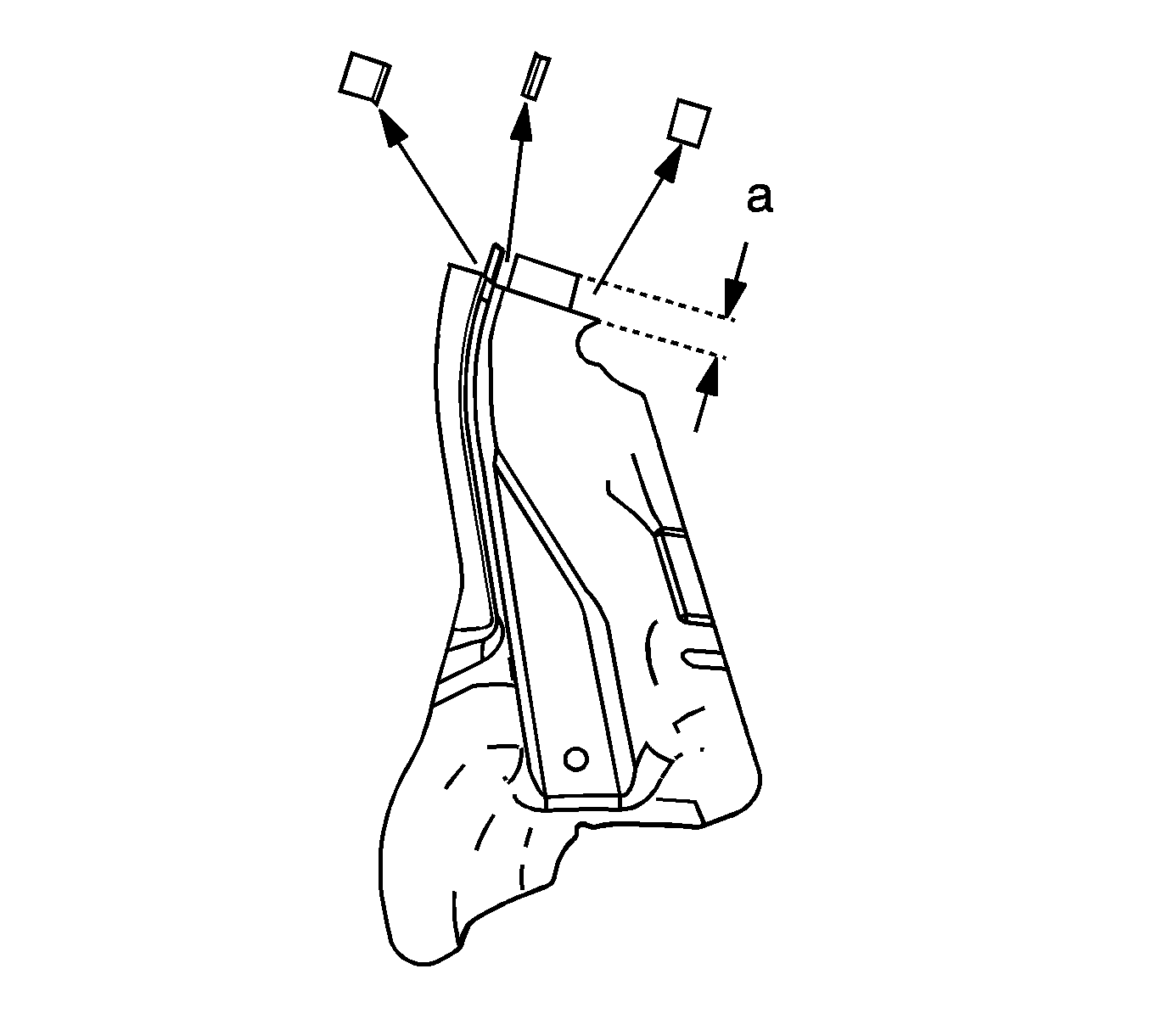For 1990-2009 cars only
Removal Procedure
- Disable the SIR system. Refer to SIR Disabling and Enabling.
- Disconnect the negative battery cable. Refer to Battery Negative Cable Disconnection and Connection.
- Remove all of the related panels and the components.
- Remove the sealers and anti-corrosion materials from the repair area, as necessary. Refer to Anti-Corrosion Treatment and Repair.
- Repair as much of the damage as possible. Refer to Dimensions - Body .
- Locate the notch in the window opening pinchweld flange.
- Align a sliding square or similar tool to the top portion of the notch and scribe a line across the reinforcement.
- Use the same tool to transfer this scribed line onto the back side of the reinforcement.
- Cut at the marked location.
- Remove the damaged component from the vehicle.
- Drill 2 8 mm (5/16 in) plug weld holes on each of the 2 sides of the reinforcement. Position the center of the holes 10 mm (3/8 in) from the cut edge.
Caution: Refer to Approved Equipment for Collision Repair Caution in the Preface section.
Caution: Sectioning should be performed only in the recommended areas. Failure to do so may compromise the structural integrity of the vehicle and cause personal injury if the vehicle is in a collision.



Important: Do not section the rail in any area other than location given.




Installation Procedure
- Locate the notch on the service part.
- Align a sliding square or similar tool to the top of the notch in the window opening pinchweld flange. Scribe a line across the service part.
- Use the same tool to transfer this scribed line onto the back side of the service part.
- Place a mark 25 mm (1 in) above the scribed line on all 2 sides of the service part.
- Use the tool to scribe a line on all sides of the service part.
- Cut at the top scribed line created on the service part.
- Remove the service part portion of the reinforcement.
- Cut the upper outer flanges of the reinforcement at the section joint on the service part. Cut the flanges (a) down 25 mm (1 in) and remove the tabs.
- Cut the radius corner (b) of the service part down 25 mm (1 in) also and remove the small corner piece.
- Bend the bottom side of the service part at the sectioning location inward slightly by aligning a vice grip flanging tool or similar tool at the lower scribed line at the top of the notch.
- Prepare the service part for welding.
- Apply 3M® Weld-Thru coating P/N 05916 or equivalent to all mating surfaces.
- Position the rear rail section using 3-dimensional measuring equipment. Clamp the service part in place.
- Tack weld the part into position.
- Inspect the service part for proper dimensions, using 3-dimensional measuring equipment.
- Plug weld at each 8 mm plug weld hole location.
- Stitch weld along the entire sectioning joint. Make welds along the seam with 25 mm (1 in) gaps between. Weld the gaps.
- Clean and prepare the welded surfaces.
- Install all of the related panels and components.
- Apply the sealers and anti-corrosion materials to the repair area, as necessary. Refer to Anti-Corrosion Treatment and Repair.
- Paint the repaired area. Refer to Anti-Corrosion Treatment and Repair.
- Enable the SIR system. Refer to SIR Disabling and Enabling.
- Connect the negative battery cable. Refer to Battery Negative Cable Disconnection and Connection.






Important: The service part sectioning joint is to go inside the original reinforcement with a 25 mm (1 in) overlap.
